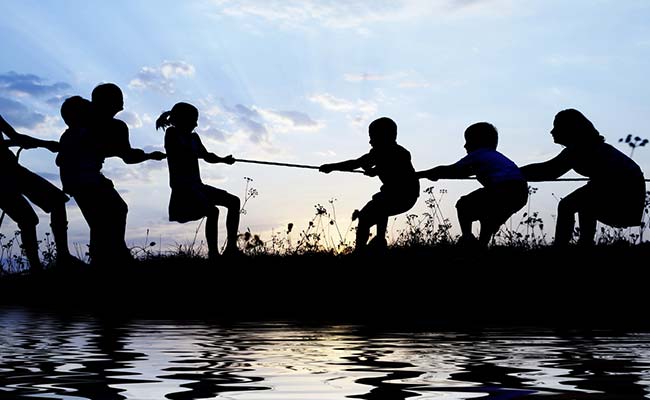The Essential Role of Play in Child Development and Learning
The Importance of Play in Child Development
When we think about a child’s growth, our minds often jump straight to academics. Sure, studying, reading, and numbers are super important, but have you ever stopped to consider how vital play is in this mix? Play isn’t just a way for kids to pass the time; it’s an essential part of their development. In this article, we’ll explore just how important play is and how it intersects with learning in ways you might not have imagined.
Why Play Matters: More Than Just Fun
The Foundation of Learning
Imagine trying to build a house without a solid foundation. What would happen? It would likely crumble under pressure, right? The same goes for children’s learning. When kids engage in play, they are actually laying down the building blocks for crucial skills that they will rely on later in life.
- Social Skills: Through play, children learn how to communicate with others, share, and resolve conflicts.
- Emotional Intelligence: When kids take on different roles in play, they gain empathy. They learn to understand others’ feelings and perspectives.
In essence, play serves as a sandbox for social interaction and emotional growth. It’s not just about letting off steam; it’s about preparing them for real-world interactions.
Cognitive Development Through Play
Think of play as the ultimate mental workout. Just like adults need to engage their brains to stay sharp, children do too! Activities like building blocks, puzzles, or even imaginative role-play stimulate their brains and promote critical thinking.
- Problem-Solving Skills: When children face challenges during play, they start to develop strategies to overcome them.
- Creativity: Imaginative play can foster creativity. Kids can dream up worlds and scenarios, enhancing their ability to think outside the box.
Physical Development: A Natural Gym
Ever watched a child run around, silly and full of energy? That’s not just cute; it’s vital for their physical health. Active play helps children develop coordination, balance, and strength. When they jump, climb, and run, they’re building their muscle, little by little.
- Fine Motor Skills: Activities such as drawing or playing with clay enhance fine motor skills.
- Gross Motor Skills: Running, jumping, and throwing are all crucial for developing gross motor skills.
When combined, these skills improve overall physical health and encourage a lifelong love of movement.
Types of Play: Different Shapes and Sizes
Free Play vs. Structured Play
Not all play is created equal. There are two main types: free play and structured play.
- Free Play: This is child-led and unstructured. Kids are free to explore their interests, which can lead to unexpected learning moments.
- Structured Play: This type is guided by adults or a set of rules. Think organized sports or games.
Both types serve their purposes, but they also cultivate different skills. Free play often encourages creativity, while structured play helps with teamwork and following rules.
Solo Play vs. Group Play
The setting in which play happens also matters. Solo play allows for introspection and personal skill development, while group play enhances social interaction.
- Solo Play: Activities like building with blocks or drawing can allow a child to explore their imagination unencumbered.
- Group Play: Playing tag or cooperative board games teaches collaboration and negotiation.
Balancing both types of play can help children harness their individual talents while also learning to work with others.
The Risks of Overemphasizing Academics
The Pressure Cooker Syndrome
In today’s fast-paced world, there’s often immense pressure on kids to excel academically from a young age. Parents and educators sometimes believe that filling a child’s day with study and structured learning is the way to ensure success. But let’s put the brakes on that thought!
Overemphasis on academics can lead to:
- Stress: High-pressure circumstances can create anxiety.
- Burnout: Just like adults, kids can burn out if they don’t have enough downtime or fun.
Instead of forming a well-rounded individual, we risk crafting a one-dimensional robot who knows facts but lacks creativity or emotional intelligence.
Finding the Balance
So, how do we find that sweet spot between play and study? Here are some tips:
- Incorporate Play into Learning: Use games to teach subjects. Math this way can make learning fun, and kids absorb lessons better.
- Encourage Breaks: Schedule regular breaks during study time. It’s important for resetting brain function and keeping engagement high.
- Join in the Fun: Parents can play, too! Whether it’s sports or board games, joining in creates bonding time and reinforces the importance of play.
Conclusion: A Well-Rounded Approach to Growth
Play is not merely a leisure activity; it holds immense value in shaping a child’s cognitive, physical, and emotional development. Yes, academics are important, but when they are stacked pie-high without room for play, we cut off children’s potential for holistic growth. By understanding the essential role of play, we can create an atmosphere where kids thrive both on the playground and in the classroom. If we want to raise well-rounded, happy individuals who excel in life, we must embrace and prioritize play just as much as study.
FAQs
Experts recommend at least 1-2 hours of active play each day for children, depending on their age.
Group play activities like team sports and cooperative games are excellent for fostering social skills.
Yes, too much structured play can stifle creativity; a balance should be maintained with free play.
Parents can encourage free play by providing open-ended toys and creating a safe space for kids to explore.
While digital play can be engaging, it should be balanced with physical, real-world play to ensure comprehensive development.







